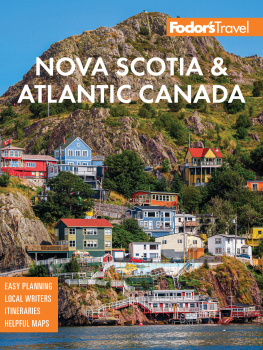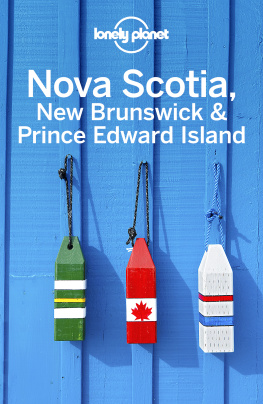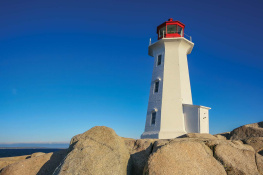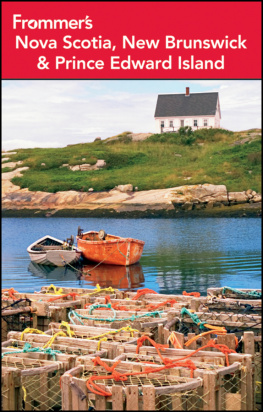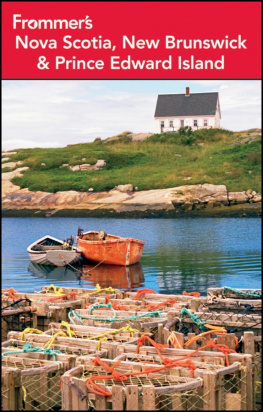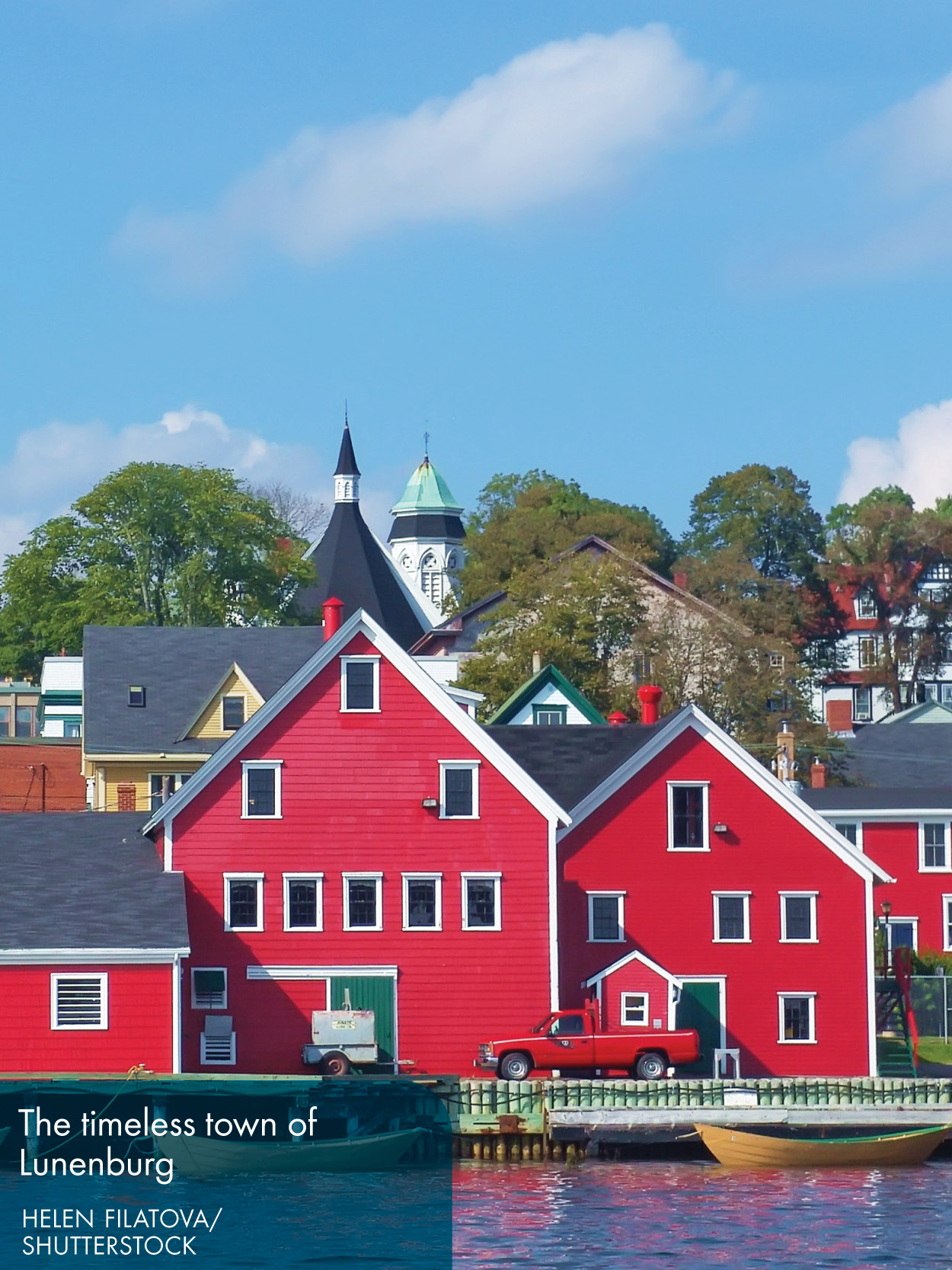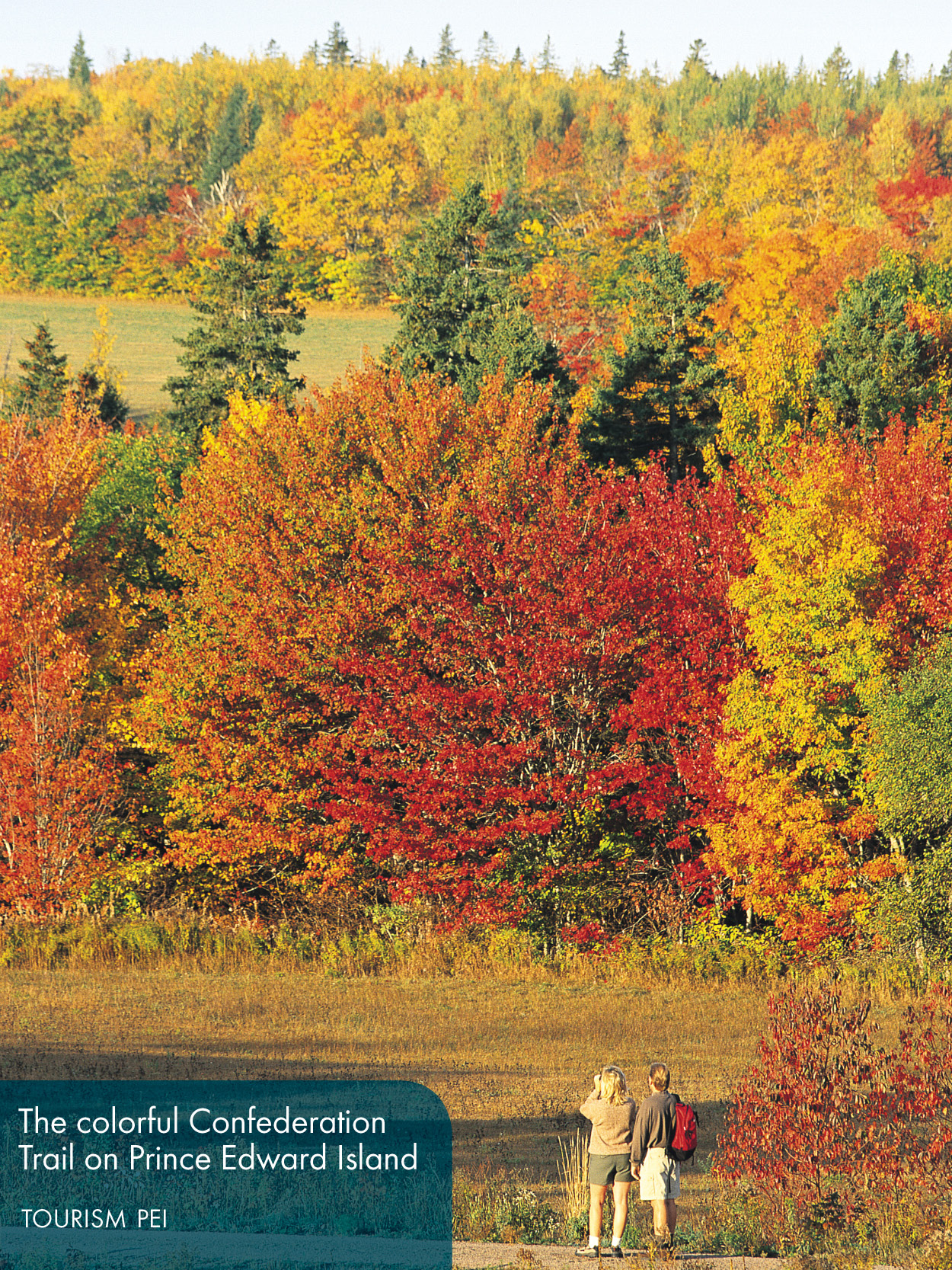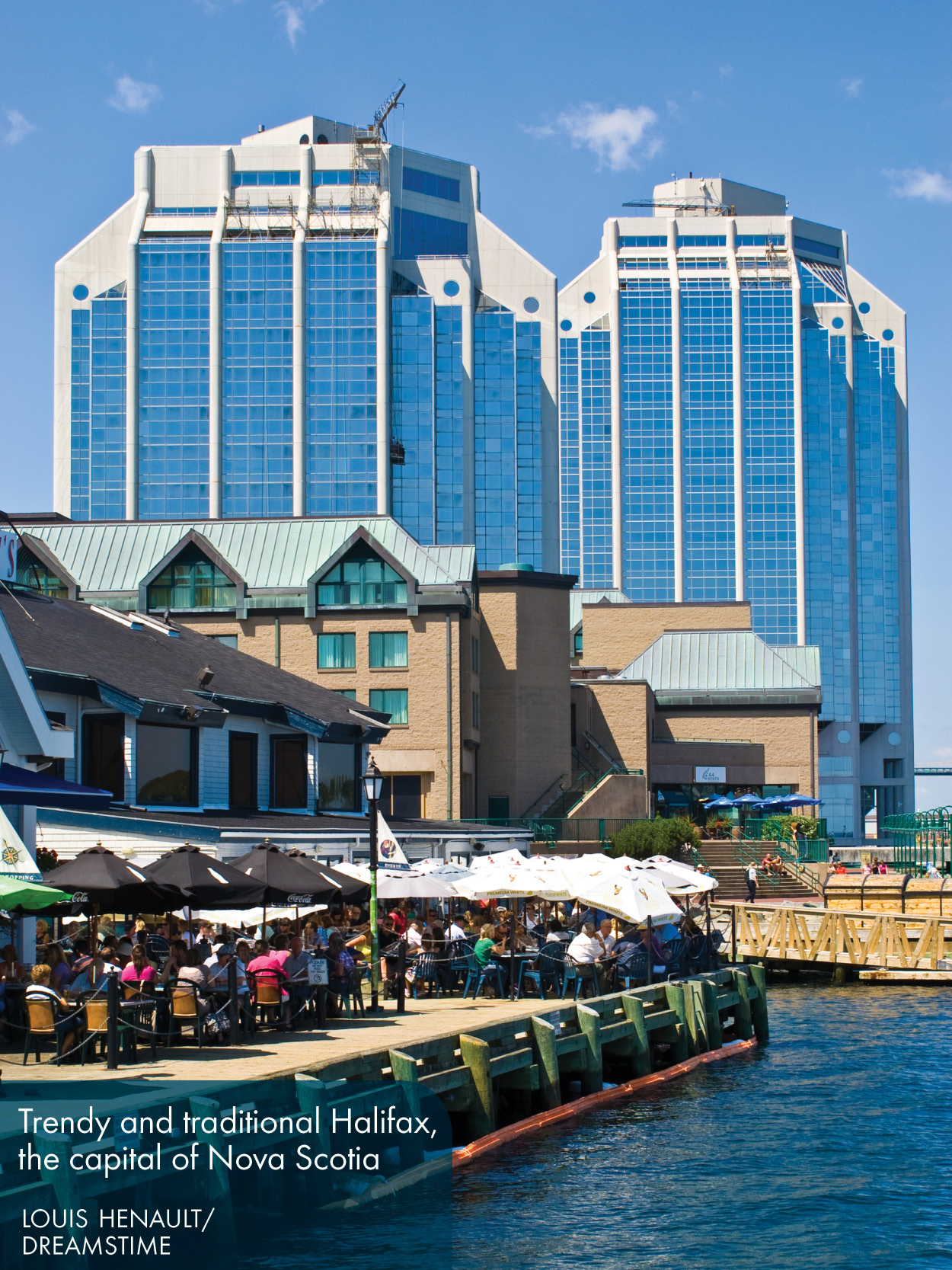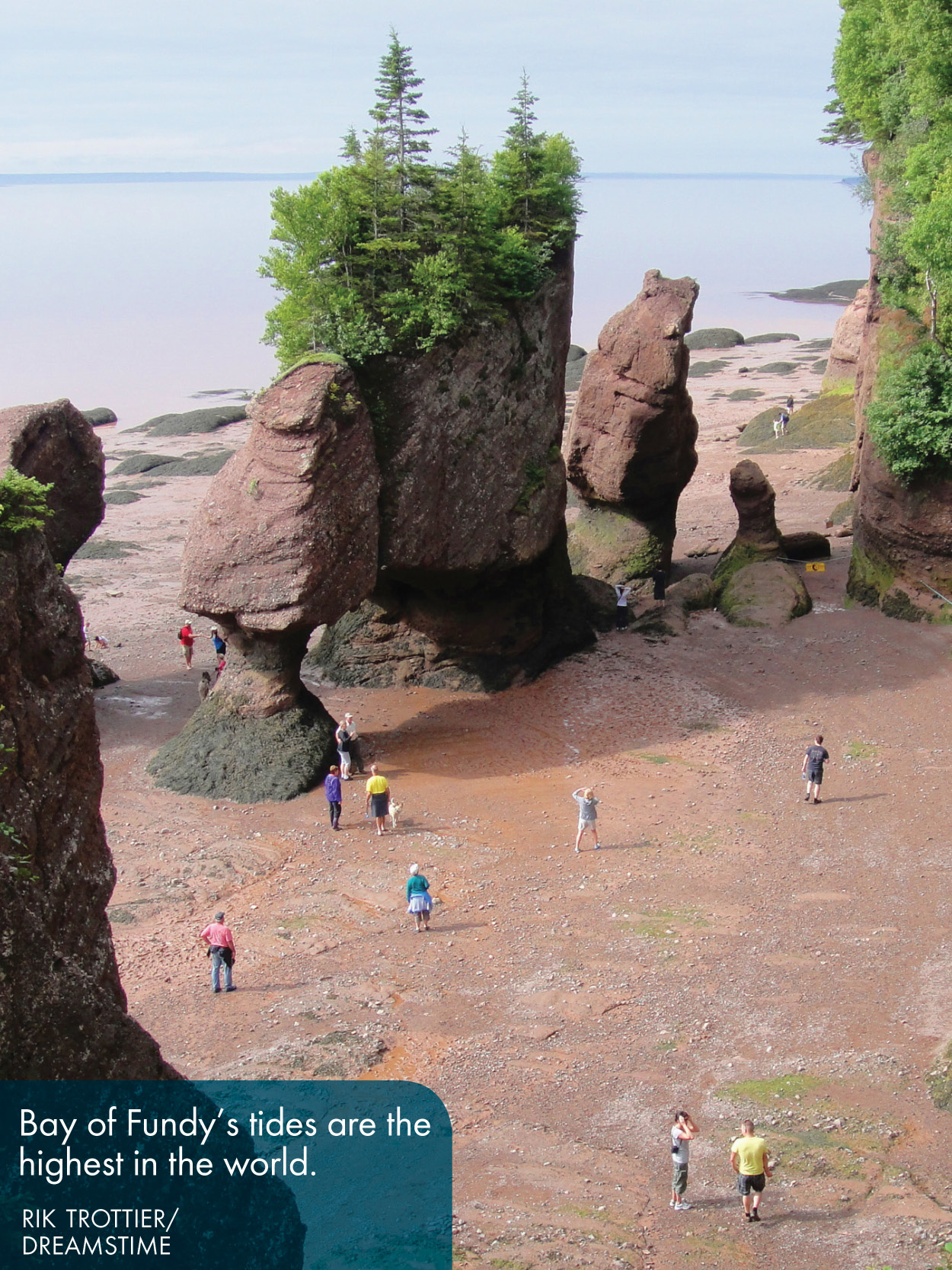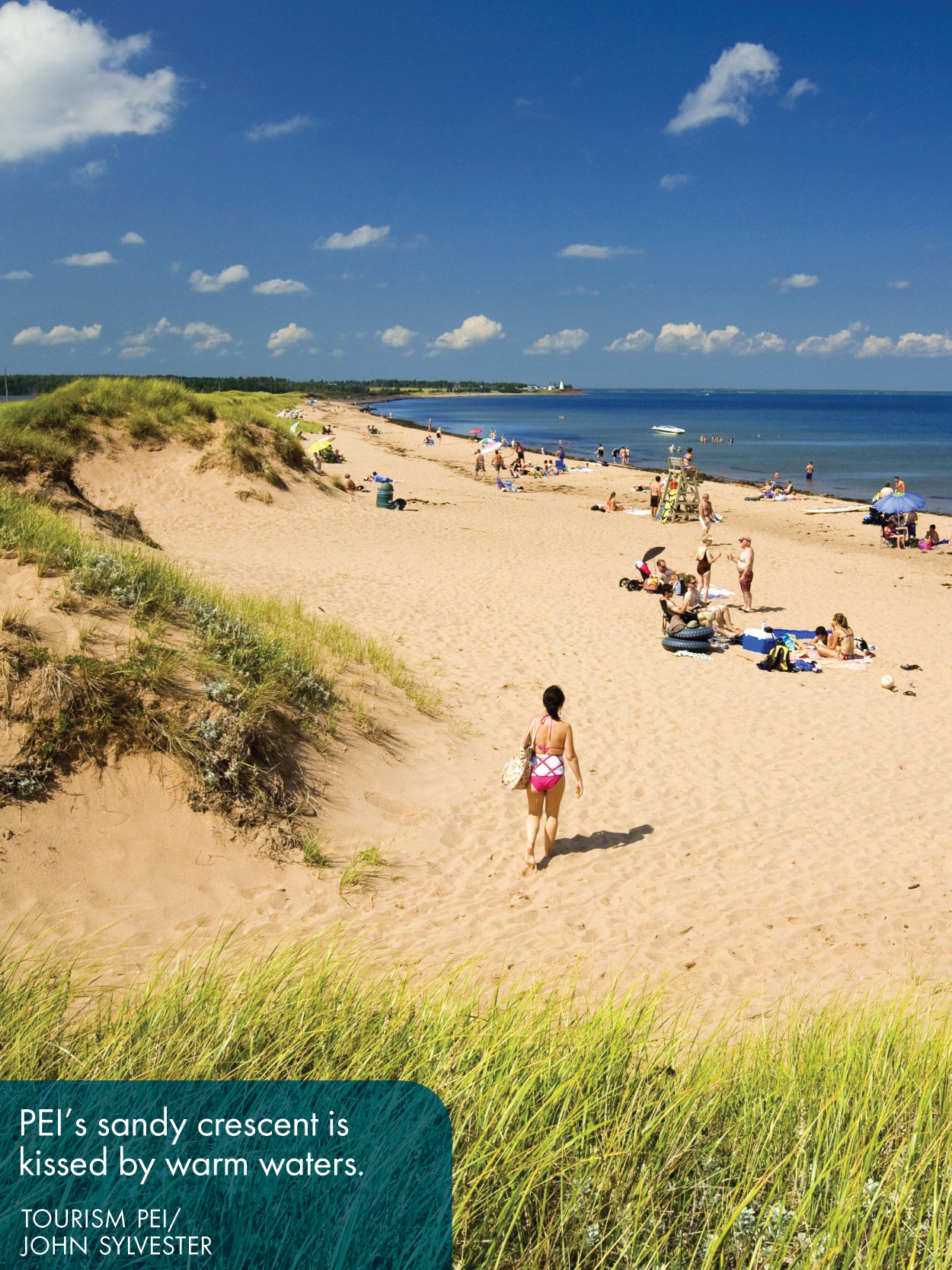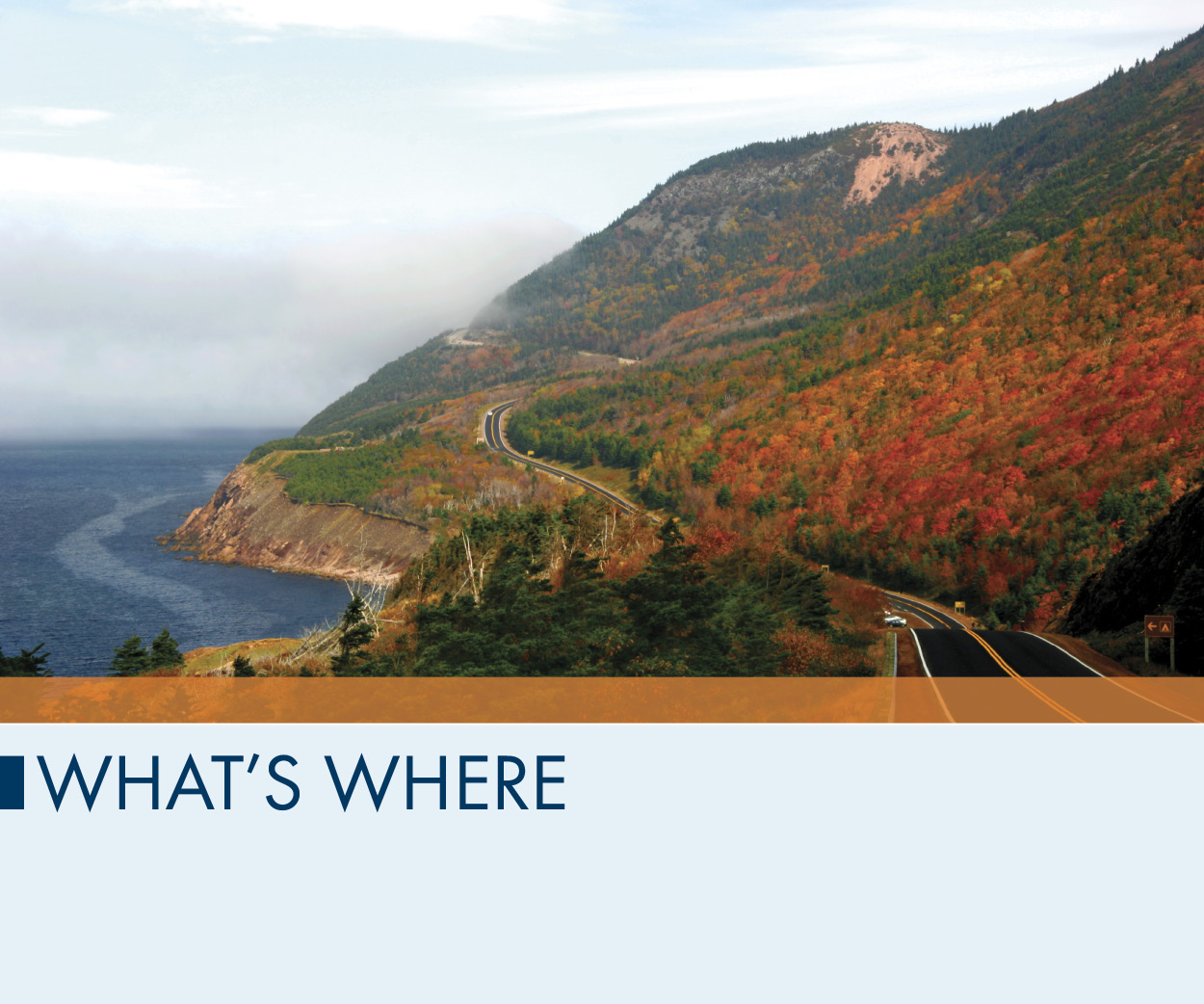Nova Scotia. Nova Scotia is the land of lighthouses and lobster traps: throw a dart at the map and youll likely hit one or the other. But there are inland highlights, too, like sylvan orchards and dramatic highlands. If youre looking for urban amenities, the capitalhip, historic Halifaxis the largest city in Atlantic Canada and has the regions broadest range of dining and nightlife options.
New Brunswick. Fronted by the Bay of Fundy, New Brunswick is a fine place to witness the action of the planets highest tides as they rise and fall a phenomenal 48 feet twice daily. Beyond the bay, the province boasts rivers, mountains, and dense forestsall of which offer abundant adventure opportunitiesplus two rich cultures (English and French) and more than four centuries of history.
Prince Edward Island. PEI is rightly nicknamed The Gentle Island because its generally prettier and more pastoral than its neighbors. PEIs rich red soil supports thriving farms, while its sandy warm-water beaches and nostalgia-inducing towns are a magnet for vacationers. Being largely flat, Canadas smallest province is also hugely popular with cyclists and golfers.
Newfoundland. The province of Newfoundland and Labrador is rugged and remote (Newfoundland sits alone in the North Atlantic; Labrador is tucked into northern Qubec). Its also relatively cold, which allows for iceberg-watching in summer, great snow sports in winter, and wildlife-viewing year-round. Nevertheless, a warm welcome is assured: people here have been greeting visitors since the Vikings arrived 1,000 years ago.
July and August, when long, warm days let you fully enjoy attractions and activities, are the most popular months to visit Atlantic Canada. Beaches beckon in summer, sites open their doors for extended hours, and outfitters go full tilt, offering both soft and extreme outdoor adventures. As an added bonus, the seafood is freshest during those sunny days (or at least it seems so when youre eating at a waterside caf) and the calendar is packed with festivals. Fall brings bountiful harvests, excellent whale-watching, and, of course, brilliant foliage. The trees, which start turning in late September, are at their most dazzling in October, and events like Cape Bretons Celtic Colours International Festival are scheduled to coincide with the vivid display.
Although many outlying inns and eateries close for the coldest months, there is a lot to do in Atlantic Canada during the winter. Snowmobilers and skiers, for example, can chill in northern New Brunswick, which gets as much as 157 inches of snow annually. March and April are the months for maple syrup and north-bound migratory birds, but travelers typically avoid this time as the weather is often frosty and wet. Late spring, though, is delightful. Apple trees bloom, wildflowers reappear, seasonal tourism operations reopen, and the visitor-to-local ratio remains low.
Climate
As a general rule, spring arrives later in coastal regions than inland, and nights are cool by the water even in summer. The balmiest land temperatures are recorded in July and August, while the ocean is at its warmest in August and early September. Autumn can last well into November, with warm, clear days and crisp nights. Most of Atlantic Canada is blanketed by snow in winter.
As far as main cities go, it may be handy to note that St. Johns is uncommonly cold and Halifax, due to the Gulf Stream, is relatively moderate in winter.
Canadas east coast is justifiably famous for its natural beautyafter all, its photogenic headlands, highlands, and harbors provide endless photo opportunities. However, it is the people who live here that really set this place apart. Heres a look at what Atlantic Canadians are focused on now.
The Economy
The economic outlook in Halifax remains bright, as demonstrated by the amount of construction downtown. Being the de facto capital of Atlantic Canada, Halifax is the regional center for health care and education (which gives it a strong white-collar presence); the Canadian navys Atlantic fleet is also based here (thus adding a lot of sailor blue). As a port city, it is further benefiting from a multiyear, C$25-billion shipbuilding contract. Unfortunately, the picture isnt so rosy elsewhere. St. Johns, previously reveling in an offshore oil boom, is beginning to feel the impact of dropping oil prices. Rural areas, meanwhile, are struggling throughout the region. Heritage industries still form their economic backbone: farming is one, forestry and its offshoots (like the pulp-and-paper business) is another. Fishing, of course, also counts because seafood here isnt merely a menu staple along much of the coast, it provides residents livelihood. Not surprisingly, tourism in such spots is especially important.




